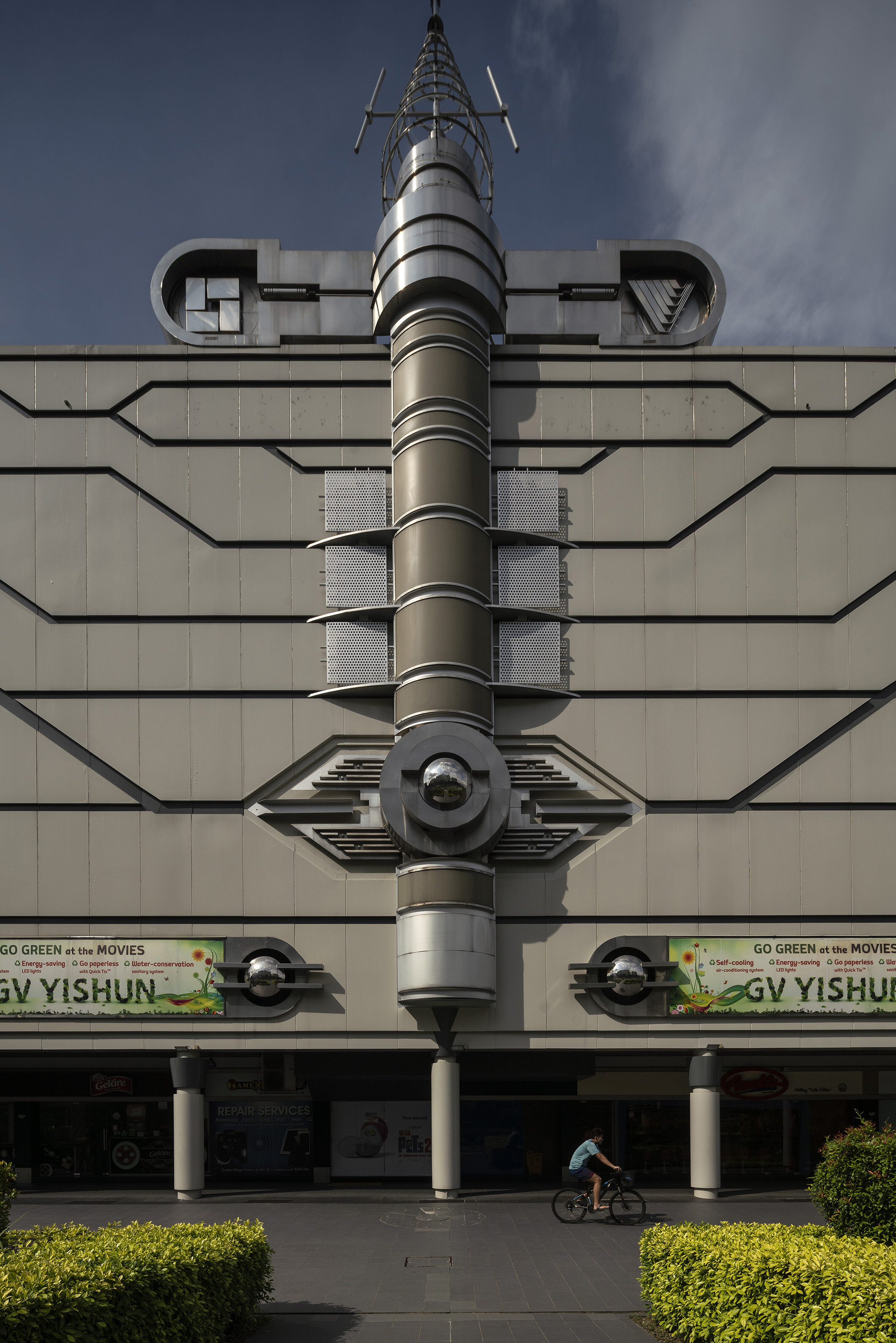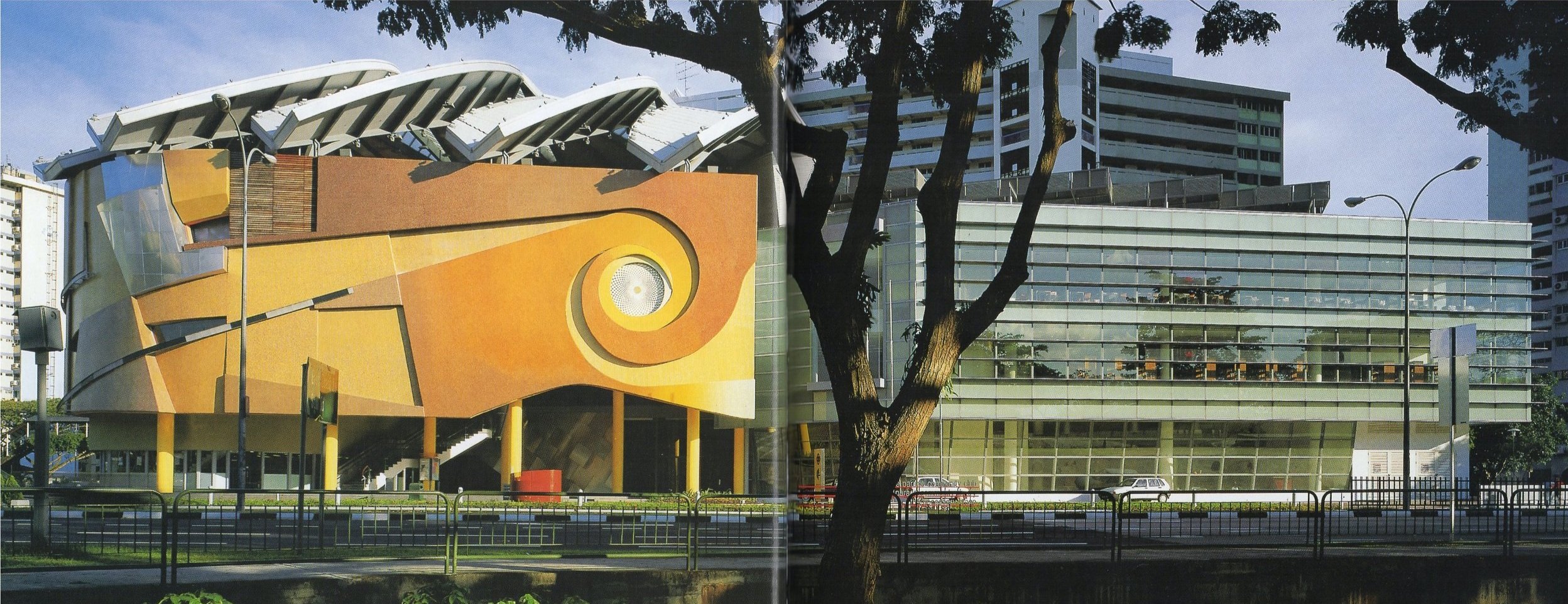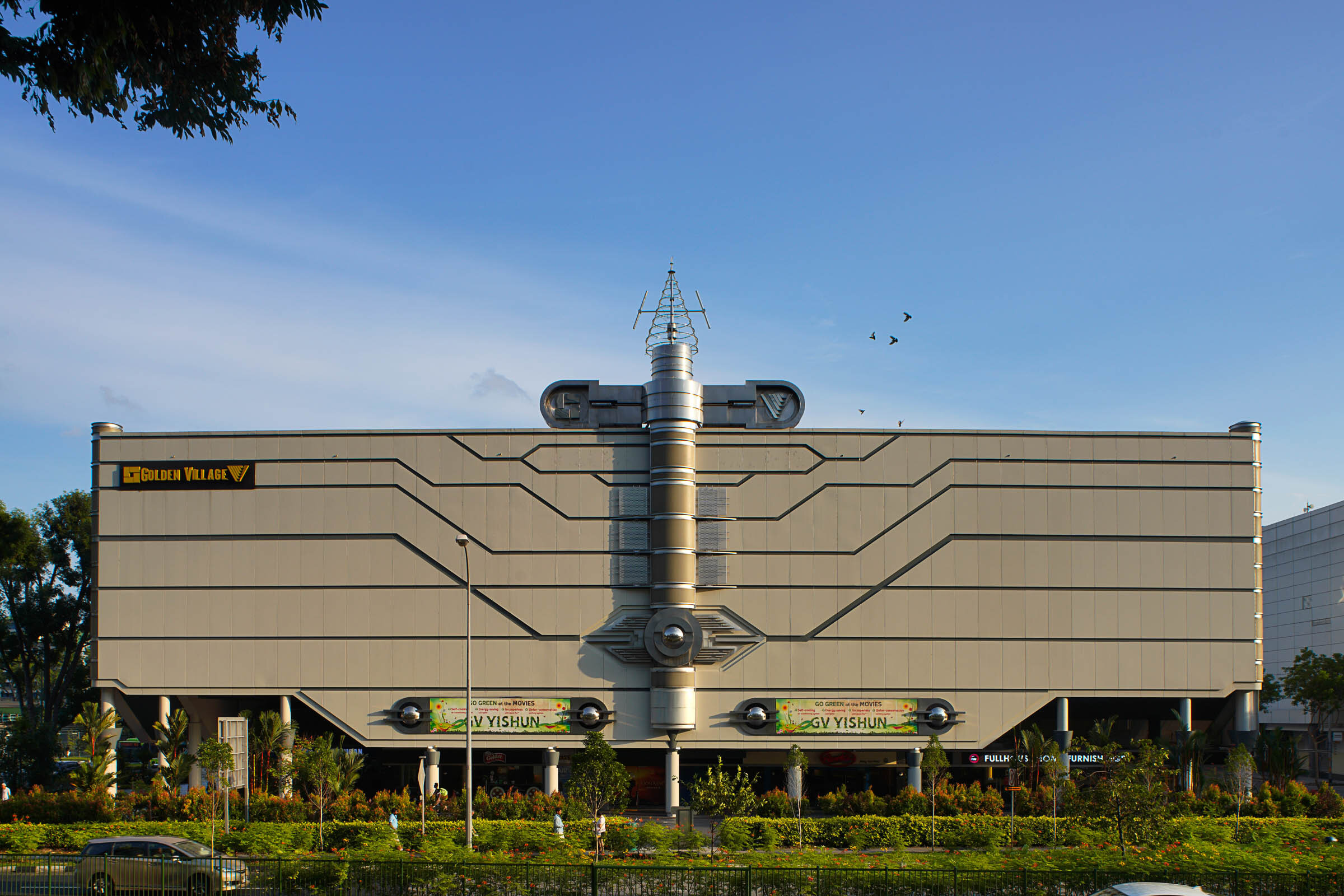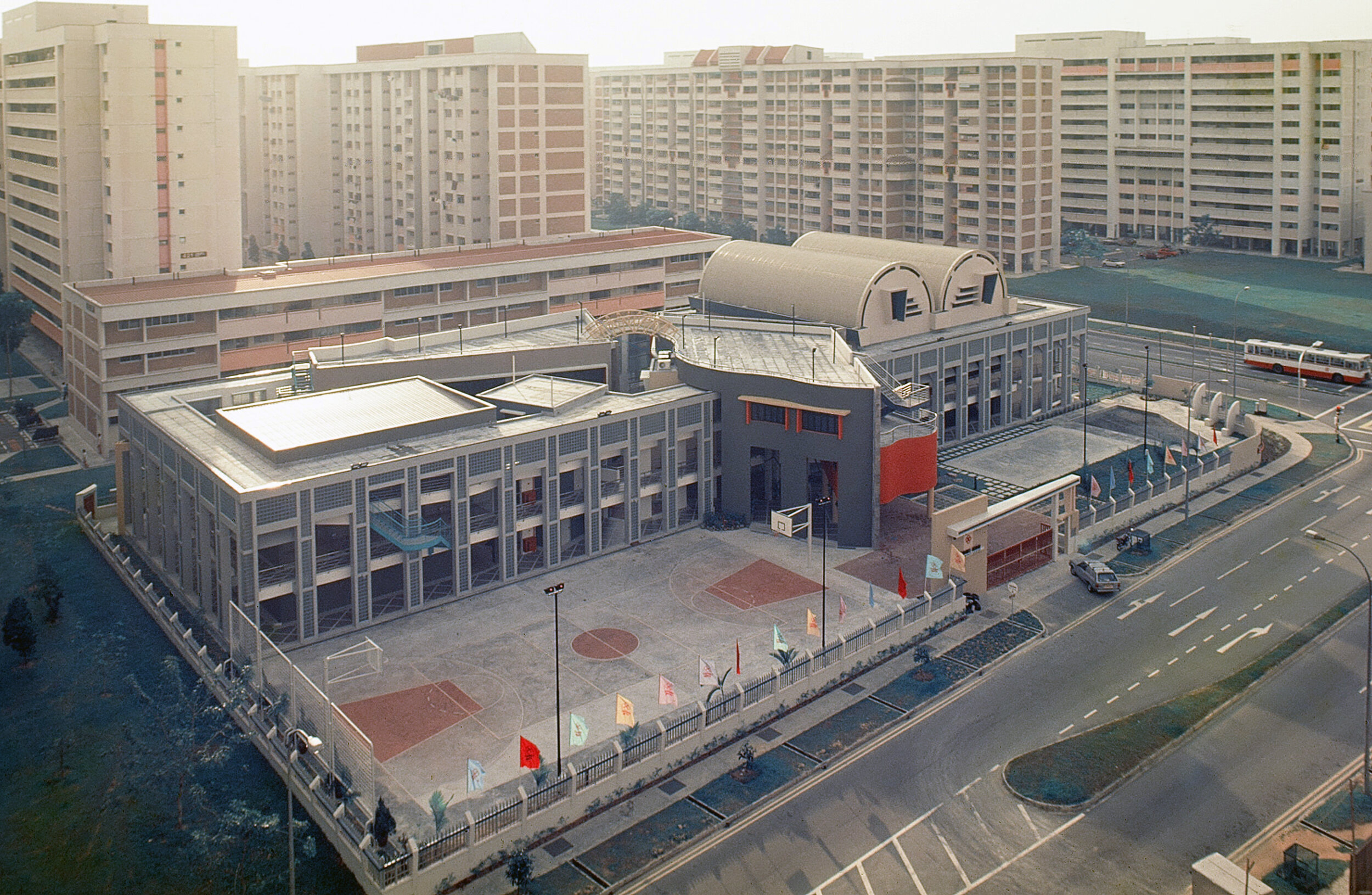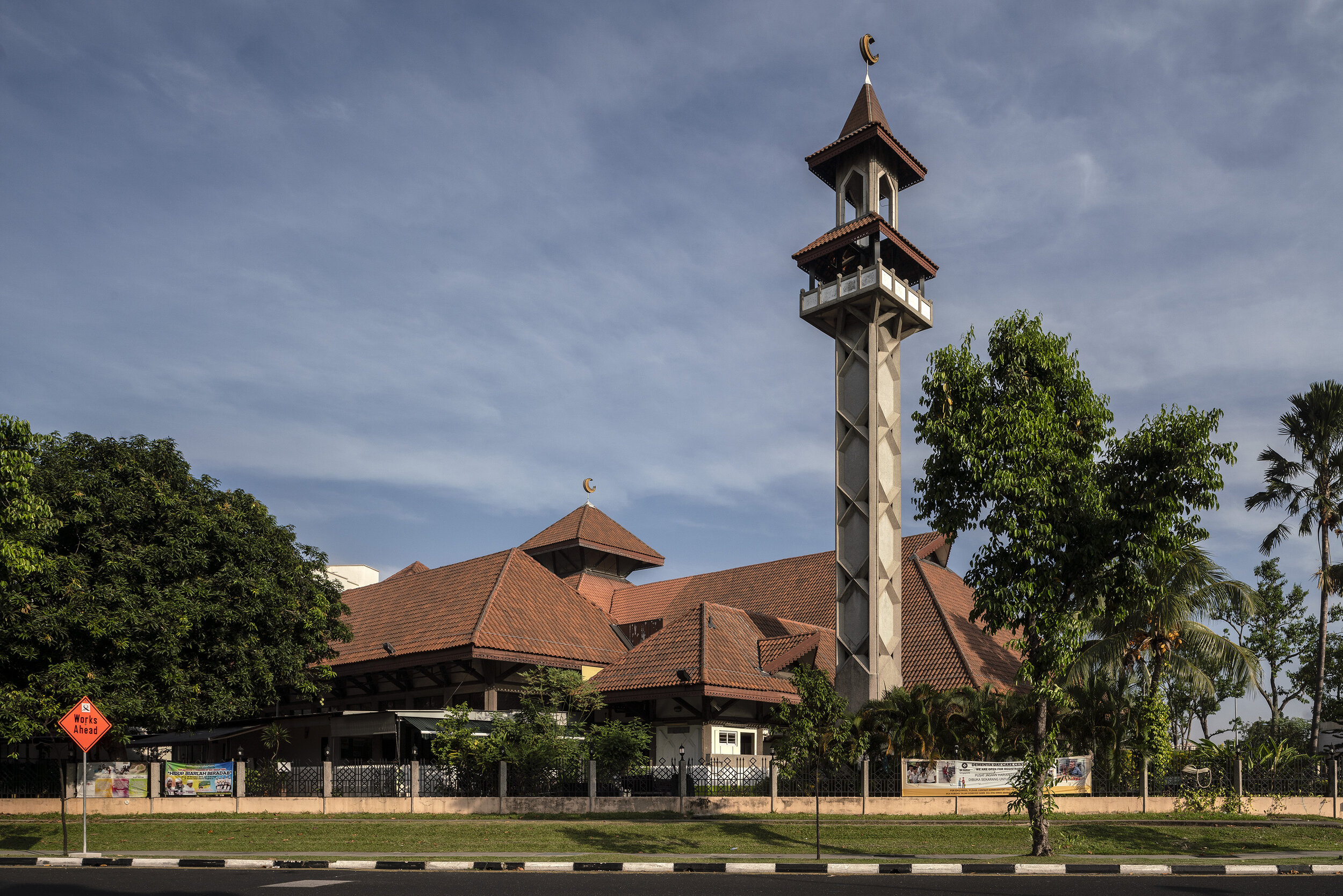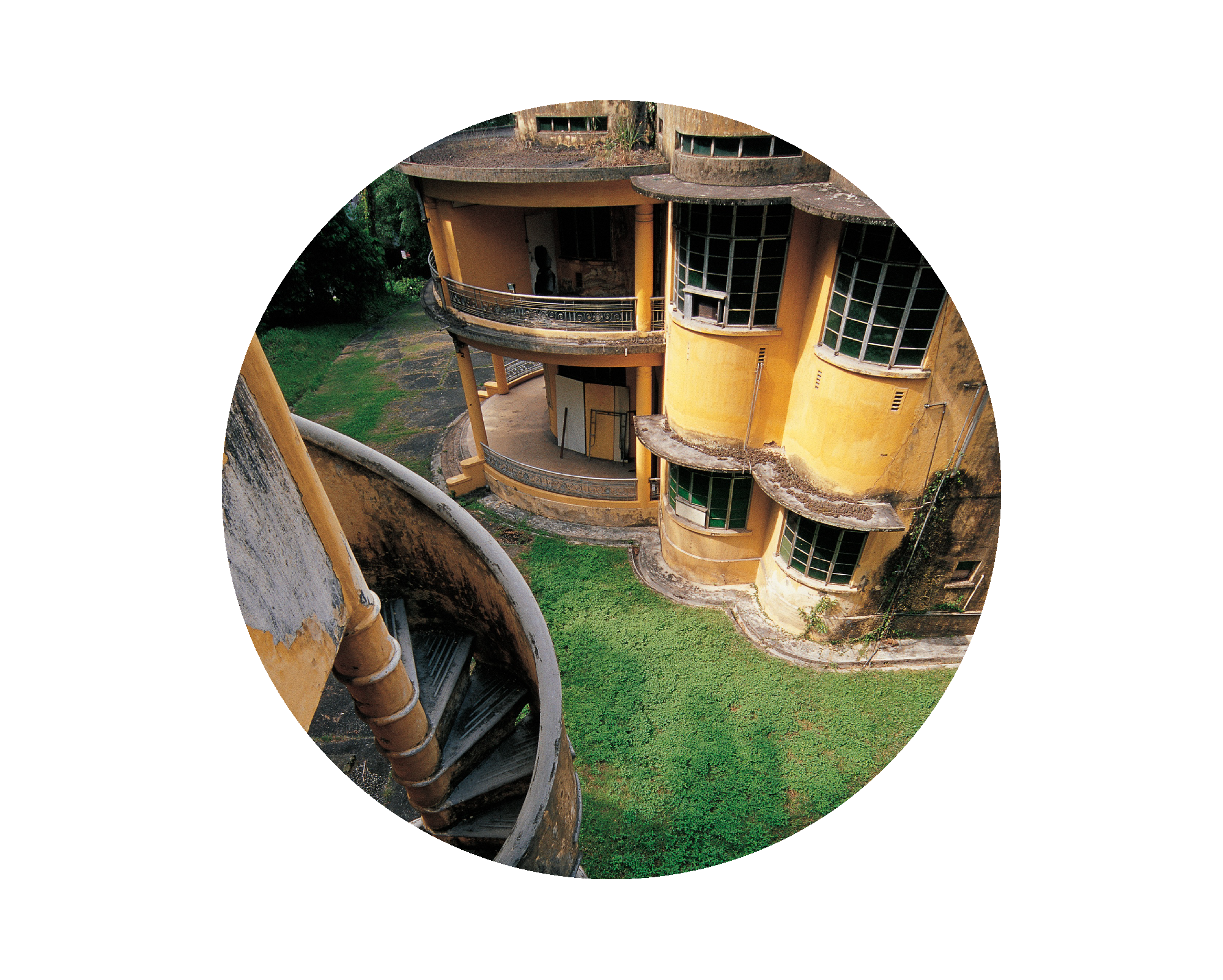Post-Modernism.
Yishun10. Photo by Darren Soh.
Postmodernism describes the cultural conditions of the 1970s and 1980s where prevailing sociocultural, political, and economic forces led to a multiplicity of styles. Developing out of a resistance to, or just plain boredom with, hegemonic modernist forms, post-modern works registered the growing pluralism in the arts and architecture of the 1970s. It challenged the sterile functionalism of post-war modernist architecture which reified both capitalist and socialist ideologies in ordered, simple, and clean design where form follows function. While modernism was based on idealism and a Utopian vision of society, postmodernism was shaped by scepticism. Reconsidering modernism’s rejection of ornamentation and historical precedents, post-modern architecture embraced (neo-)eclecticism and non-hierarchical articulations of space and form, expressing the contradictions, ironies, and ambiguities of the postmodern condition.
The early writings and works of Robert Venturi are seminal in the formulation of post-modernism in the mid-1960s. Dubbed by Venturi as his ‘gentle manifesto’, Complexity and Contradiction in Architecture (1966) attacked the institutionalised corporate modernism of the International Style in an age where the notion of a single aesthetic was untenable. Deriding Ludwig Mies van der Rohe’s classic maxim ‘less is more’ and replacing it with ‘less is a bore’, Venturi advocated for ‘elements which are hybrid rather than “pure” … ambiguous rather than “articulated” … messy vitality over obvious unity… richness of meaning rather than clarity of meaning…’.
Cultural theorist Charles Jencks identified ‘double coding’ in postmodernism where there is ‘the combination of modern techniques with something else (usually traditional building) in order for architecture to communicate with the public and a concerned minority, usually other architects.’ Similarly, Venturi’s later work Learning from Las Vegas (1977) – a semiotic study of how architectural signs communicate messages – introduced the concept of the ‘duck’ (a building which is itself a symbol) and the ‘decorated shed’ (conventional buildings with applied symbols). The study led to the rediscovery of meanings contained in the iconography of past civilisations, and to an architecture where modern techniques are combined with ‘quotations’ of traditional or historical styles.
Choa Chu Kang Interchange. Photo by Darren Soh.
As an international phenomenon, post-modernism manifests in different forms across a wide range of socio-cultural contexts from the classical allusions in the Ricardo Bofill, to the Deconstructivism of Peter Eisenmann, and to the fragmented collage approach of Frank Gehry, amongst others. In Singapore, William Lim became a proponent of post-modernism after becoming disenchanted with modernism in the late-1970s. Lim’s brand of post-modernism was not ‘kitschy’ architectural postmodernism, but rather ‘socio-political postmodernism’. In Lim’s early post-modern works such as St. Andrew’s Junior College and Chapel (1978) and Ken Thai House (1979), space was fragmented and layered. Organisational grids were rotated as experiments on ‘disrupting the hierarchy’ and power-structure implied in modernist plans. His later post-modernist phase saw the design of community projects such as the Tampines North Community Centre (1989) and Marine Parade Community Centre (2000) where the colourful and playful fragmentation of space was influenced by Frank Gehry after Lim and his mentee Mok Wei Wei visited the architect in Los Angeles in 1983.
Other exponents of postmodernism in Singapore were Tang Guan Bee and Geoff Malone. Unlike Lim, both Tang and Malone do not write about their works and do not draw on cultural theories. In fact, Tang is a friendly beer-drinking chap who has a tendency of mixing his English sentences with Hokkien phrases. Their works can be considered postmodernist primarily due to their exuberant formal qualities that derived from their collage-like juxtaposition of different, oft-colourful elements. Among Tang’s notable works are the Gallery Hotel (co-designed with William Lim Associates), East Point Mall, Windsor House, Bedok Marketplace, and Abelia Apartment. Malone is probably best known for Yishun 10 (1992), Palisade Condominium, and the Crystal Court.
Yishun10. Photo by Darren Soh.
Last updated 21 May 2021. Written by Jason Ng and Chang Jiat Hwee.
References
Chang, Jiat Hwee. ‘“Totally Contextual”: The Architecture of Mok Wei Wei’ in Justin Zhuang, ed., Mok Wei Wei: Works by W Architects (London: Thames & Hudson, 2020), 18-30.
Jencks, Charles A. The Language of Post-modern Architecture (New York: Rizzoli International Publications, 1977).
Jones, Caroline A. ‘Post-modernism’ in Grove Art Online, accessed 15/05/2021.
Venturi, Robert. Complexity and Contradiction in Architecture, 2nd ed. (New York: The Museum of Modern Art, 1977 [1966])
Venturi, Robert, Denise Scott Brown and Steven Izenour. Learning from Las Vegas: The Forgotten Symbolism of the Architectural Form (Cambridge, Mass.: The MIT Press, 1977).


